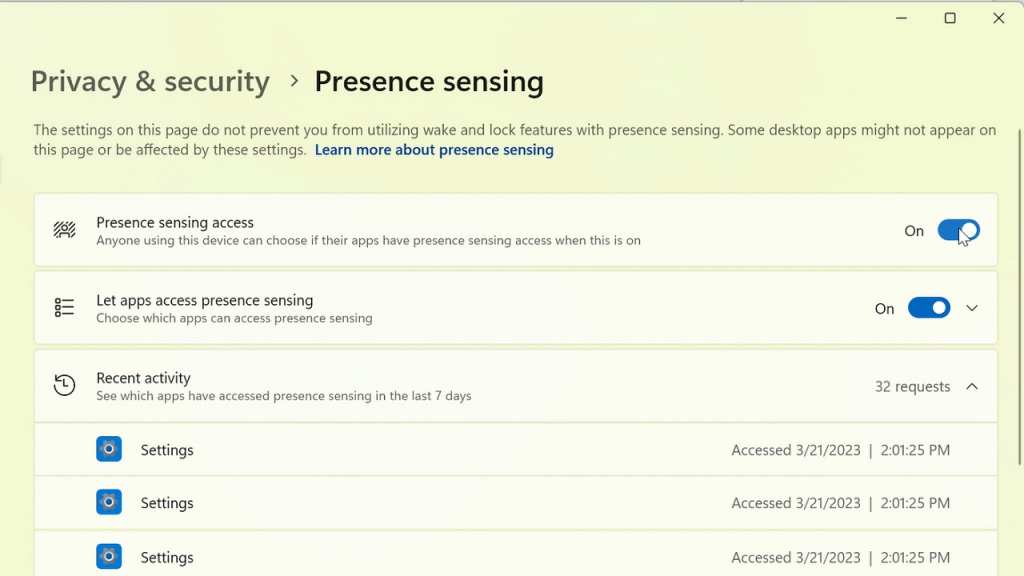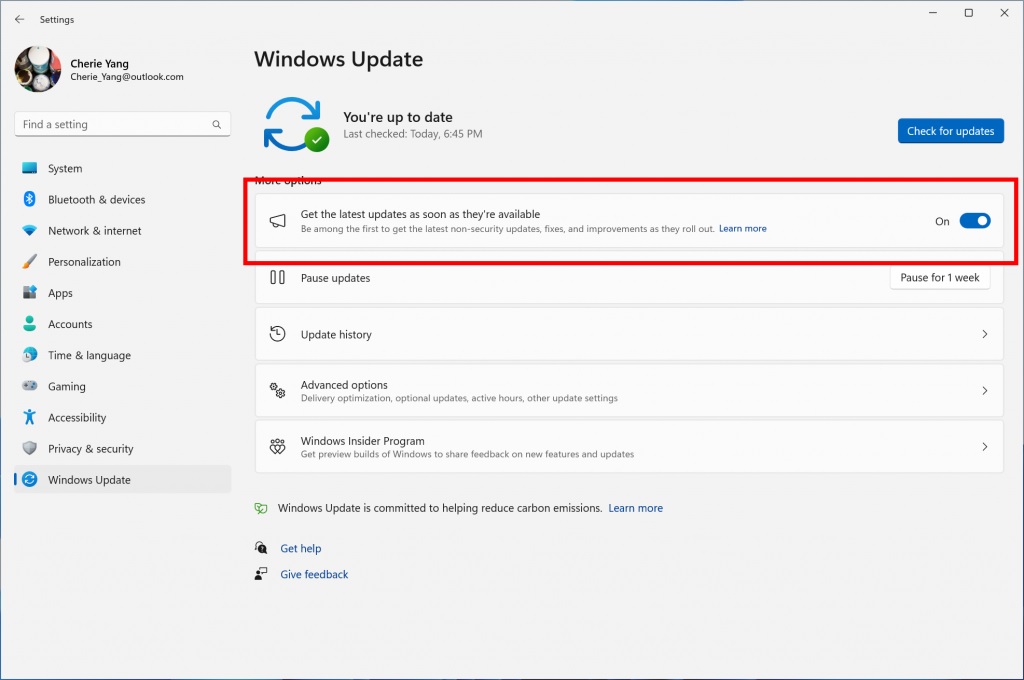Windows 11 is getting a new privacy setting that allows users to control whether applications can detect when actively interacting with the device.
This change is being tested in the Windows 11 Beta preview build 22624.1610, released today as the KB5025299 update.
The new privacy setting is called ‘Presence sensing’ and allows you to configure whether applications can use APIs to determine if a user is active or inactive in Windows.
“Represents a sensor that detects whether a user is present, absent, or not interacting with their device,” explains the API documentation for the HumanPresenceSensor class.

Source: Microsoft
This feature can significantly impact a Windows 11 user’s privacy, responsiveness, and performance.
With these settings, you can now block or allow certain apps from accessing their presence sensors. This means you can have more control over your privacy and prevent apps from collecting and using your data without your consent.
Presence detection can also have other practical uses. For instance, Microsoft explains that devices can be locked automatically when unattended to protect sensitive files and other information.
User intent can also be inferred to reduce the response time required from detection to authentication or interaction.
Finally, battery life can be preserved by reducing unnecessary screen idle time when a user is not actively using Windows.
To maximize privacy, Microsoft does not collect images or metadata; all processing is done locally on the device’s hardware.
Users can find these settings under Settings > Privacy & security > Presence sensing, provided their device supports it.
In addition to the new privacy setting, Microsoft is also introducing a new toggle under Settings > Windows Update for “getting the latest updates as soon as they are available.”

Source: Microsoft
This toggle is designed for the Beta Channel, allowing Insiders to switch seamlessly to the enablement package. Insiders in the Beta Channel who are on Build 22621 and toggle this on will be updated to Build 22624 via the enablement package.
Those already on Build 22624 who toggle this on will see a “Windows configuration update” offered via Windows Update. This configuration update ensures that the new toggle is correctly connected to Microsoft’s backend services and introduces nothing new for Insiders.
It is worth noting that Microsoft’s latest Windows 11 beta update is aimed at testers and may not be suitable for general consumers.
However, the changes and improvements made in this update give us an insight into what we can expect from the final version of Windows 11.
